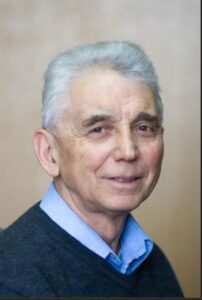
Title: Motion and concentration dynamics of small particles and plankton in fluid flows
Abstract: Advection and distribution of industrial impurities and biological organisms in the ocean and internal waters plays a crucial role in many ecological and biological situations. These processes have been studied for decades, but theoretical modeling of the action of currents and waves on micro-objects is limited. Even the basic equations for a particle motion in an inviscid fluid have been reconsidered several times up to the late 1980s. Here two classes of problems are outlined. The first is the complex dynamics of a particle with inertia in non-viscous fluid flows, studied both analytically and numerically. In general, the equations of such a motion are non-integrable, and we concentrate on the cases of axisymmetric flow (that is completely integrable) and a periodic cellular flow in which unbounded stochastic motions are possible. The second problem is the motion and redistribution of particles and plankton organisms under the action of currents and internal waves in the ocean. Particularly, the effect of solitary internal waves (internal solitons) which are sufficiently short to allow setting aside much slower processes such as diurnal changes of light and temperature, and internal tides. The cases of small Reynolds numbers Re when a passive particle moves with the fluid, and of large Re when its velocity can be smaller or larger than that of fluid, are considered. The dynamic of particles’ concentration is also studied. Two models of vertical swimming juxtaposing with the transport by the current are considered. Specific calculations refer to the waves in a two-layer fluid and a stratified layer with a given buoyancy frequency. The results show that a wave affects the particles differently when they are initially distributed homogeneously, and when they occupy a thin layer as is rather common in the upper ocean. These results are in qualitative agreement with the available experimental data.
Bio: Prof. Lev Ostrovsky received a PhD degree and a Doctor of Science degree and the title of Full Professor in the Soviet Union. Until 1994 he was a Laboratory Head and Chief Scientist at the Institute of Applied Physics of Russian Acad., Sci. in Gorky (later Nizhny Novgorod). He also kept a part-time professorship at Gorky/Nizhny Novgorod University. From 1994 to 2016, he worked in the USA as a Senior Scientist at the University of Colorado in Boulder, then at NOAA Environmental Science Research Laboratory in Boulder. Now Lev Ostrovsky is affiliated with Universities of Colorado and North Carolina as Adjunct Professor. He also had numerous visiting positions and fellowships at universities and laboratories in the USA, Britain, France, Australia, Norway, China, and others. The scientific interests of Lev at different stages of his carrier included lasers and nonlinear optics, biophysics, nonlinear and biomedical acoustics, fluid dynamics and oceanography, and general nonlinear wave theory. He is the author and co-author of 5 books, numerous book chapters and student’s workbooks, over 300 papers, 11 Invention Certificates (Russian patents), and a registered Discovery. Under his supervision, 18 students obtained a PhD degree; 12 of them were then awarded the Doctor of Science degree. He has been a plenary and invited speaker and a member of program committees at numerous scientific meetings. Among the Lev’s awards are the USSR State Prize, the Mandelstam Award of the Russian Academy of Sciences, Orson Andersen Distinguished Fellowship at Los Alamos National Laboratory, and the Lagrange Award of this Conference. He is a Fellow of the Acoustical Society of America, a member of American and European Geophysical Unions, and Russian Acoustical Society. He has been a Co-Editor of professional journals, including Chaos, Acoustical Physics, Atmospheric and Oceanic Physics, and Discontinuity, Nonlinearity, and Complexity (DNC). At present, he is an Honorary Editor of the journals Chaos and DNC.